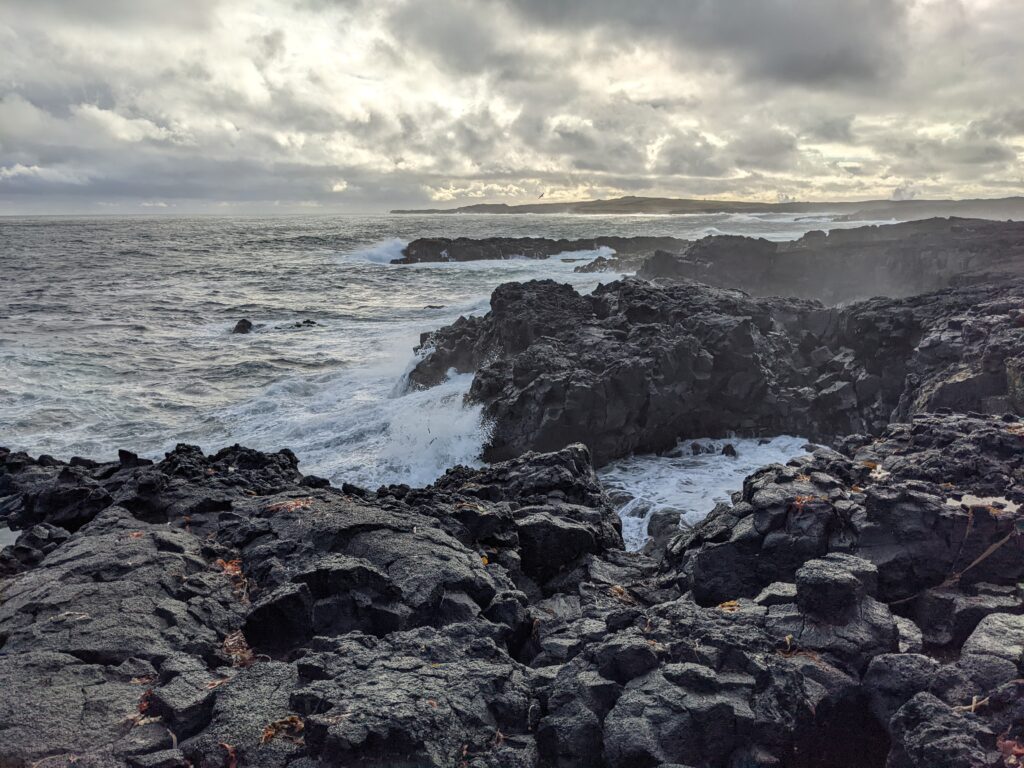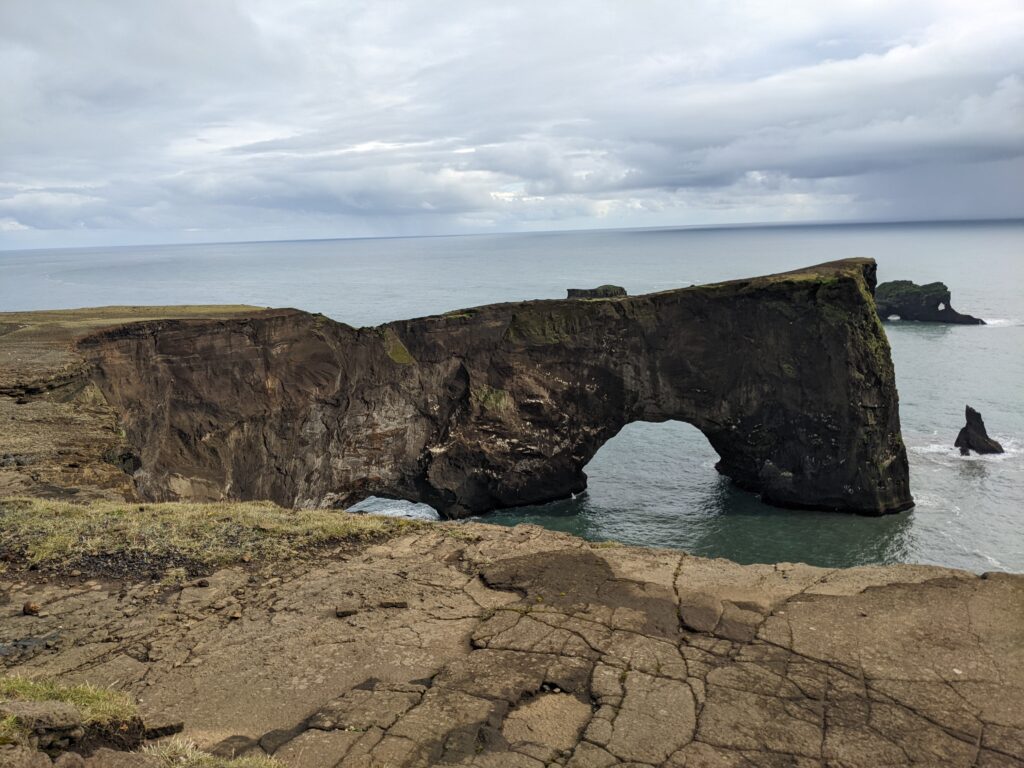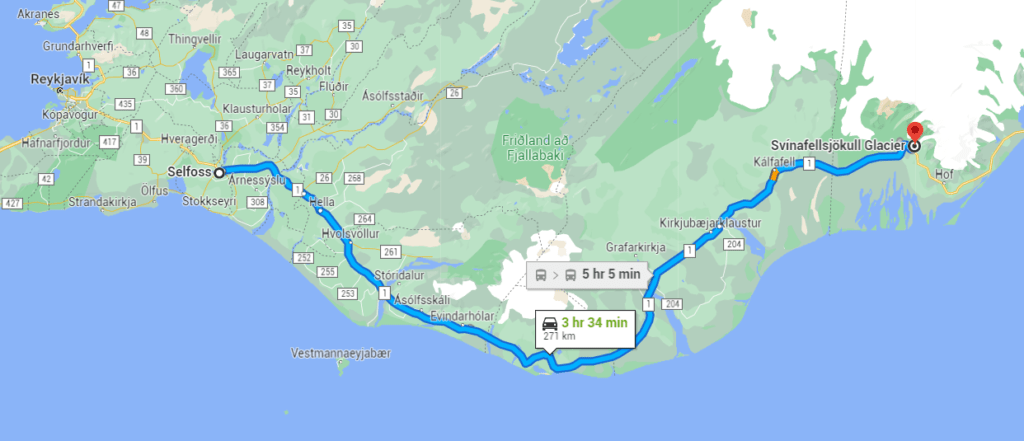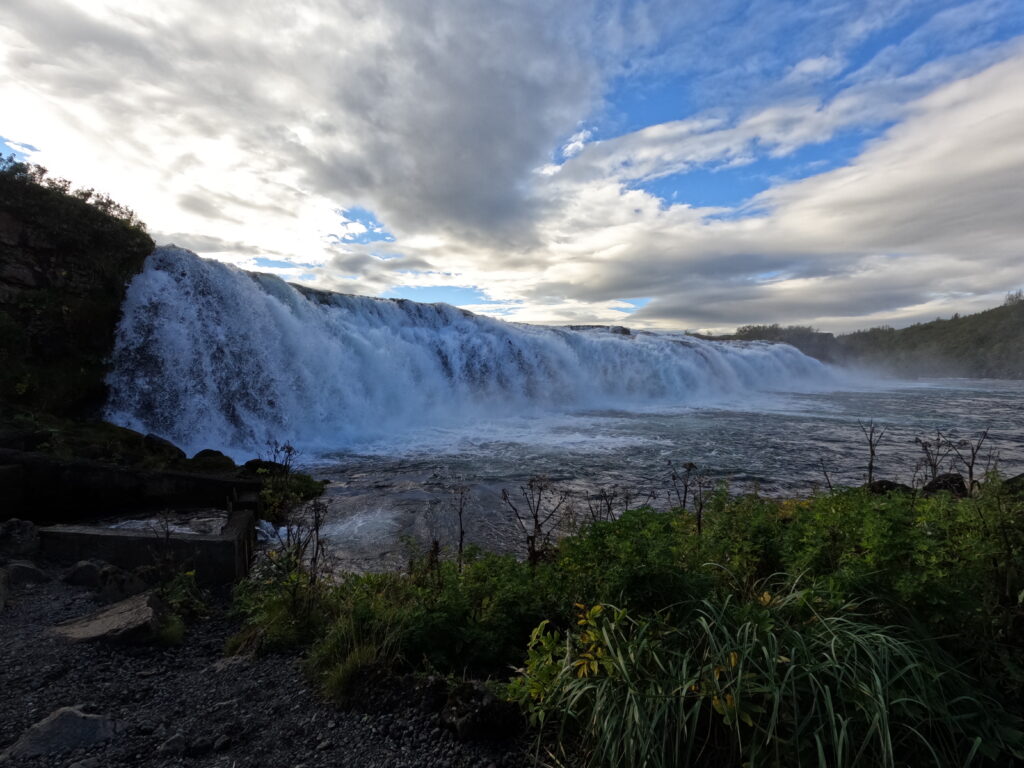Welcome back to another trip report where we explored the majestic and mysterious island of Iceland. In this Iceland guide, I will be talking about tips to do Iceland on a budget.
In addition, I’ll mention the activities families can do in Iceland with kids.
Related: Our AMAZING 4200 KM Self-Drive UK – Ireland Family Trip on Budget

A Brief Introductory of Iceland
Iceland is a Nordic island country located in the North Atlantic Ocean with a population of about 364,000 people. Its capital and largest city is Reykjavík.
Iceland is known for its rugged landscapes, glaciers, hot springs, and geysers. The country’s economy is based largely on fishing and tourism, and it also has significant resources of geothermal energy.
The official language is Icelandic and the currency is the Icelandic krona. The culture of Iceland is heavily influenced by its Norse and Celtic heritage, and the country has a rich tradition of storytelling, poetry, and folklore.
Is Iceland Expensive
Iceland is generally considered to be an expensive country to visit. The cost of living in Iceland is high, with prices for goods and services, such as food, accommodation, and transportation, being significantly higher than in many other countries including Norway and Switzerland.
Additionally, Iceland’s tourism industry is booming, which has caused prices for tourist activities and accommodations to rise. Visitors to Iceland should expect to pay more for basic necessities such as food and accommodation, as well as for activities such as visiting national parks or taking guided tours.
However, budget travel is possible and some ways to save money include: camping or staying in budget accommodation, cooking your own meals, renting a car and planning your trip in advance to get the best deals.
What Are The Most Useful Mobile Apps In Iceland
Here are some of the most useful apps that can be handy in Iceland. Also, depends on the season, some of these apps like the weather and road are a must have. Others like the parking app is mandatory as there are no gated parking lots in Iceland.
Some of the very helpful mobile apps in Iceland:
Taxi: Hreyfill
Bus: Strætó
Road Conditions: safetravel.is
Weather: Veður
Northern Lights (Aurora): Aurora Alerts Northern Lights
Parking: Parka.is
Can I Use Cash In Iceland
Based on my experience, cash is rarely used in Iceland. Gas station requires a credit card with pin or tap functionality. Same goes for parking lots in some attractions. They are all monitored by cameras and the only payment method is via the app which requires a credit card too.
Everywhere we went accepted and asked for a credit card too. I’d say Iceland is a pretty cashless country. So make sure you have at least 2 credit cards in case one fails to work.
Arrival In Iceland & Picking Up Rental Car
We flew from London to Iceland as a multiday stopover program on our return to Canada.
Keflavík International Airport, also known as Reykjavík–Keflavík Airport or simply Keflavík Airport, is the main international airport in Iceland which is located about 50 kilometers (31 miles) southwest of the capital city of Reykjavík.

The airport serves as the main hub for Icelandair and also as the main port of entry for international visitors to Iceland. It handles over 11 million passengers annually, making it the largest airport in Iceland.
The airport has a wide range of facilities including duty-free shops, restaurants, car rental desks, currency exchange, and free Wi-Fi. There are also many connections from the airport to Reykjavik by bus, shuttle, and taxi.
After landing at Keflavík international airport and clearing the Schengen customs and immigration, we were officially in Iceland at around noon. Outside the arrival, we took a shuttle bus to the rental cars offices. This was a short 5 minutes drive where I picked up our rental car from Lagoon Car Rental.
I recommend checking on some of the main car rental sites like QEEQ to find the best option that suits your needs.
Many of the best sights of Iceland are reachable by a small 2WD sedan car. However, some are only accessible through the rugged F Roads. These roads are only possible with a high clearance 4WD vehicles.
You’ll need to plan your adventure and decide on the car. Of course, the price of a bigger car and its associated costs (gas, insurance, security deposit) is much higher especially during the tourist season.

Any Cheaper Rental Car Options In Iceland? This is the question that I was trying to find an answer for when planning our trip. The only alternative to rental companies I found was Turo.
However, I didn’t rent from Turo as the prices were surprisingly higher than rental companies. In addition, I wasn’t sure if I can use my credit card insurance if I rent through Turo versus a proper car provider. This is like the Airbnb of rental cars.
After doing the paperwork, we picked up our rental around 2 PM and head the road. The plan was to do as much as possible on our first day to maximize our exploration.
Arrival Day Exploration in Iceland
This was a short flight and we didn’t have to wake up too early in the morning. In addition, we spent a good time in the lounge in London so had good amount of energy to explore.
After picking up the car rental, we headed to the famous Bridge Between Continents in Iceland.

The Bridge Between Continents, also known as the Þingvellir National Park Visitor Center, is a footbridge that spans the fissure between the North American and Eurasian tectonic plates in Iceland. It is located in the Þingvellir National Park, which is a UNESCO World Heritage site.
The park is known for its unique geology and is a popular destination for tourists visiting Iceland. The bridge provides a unique opportunity to walk between the continents and to learn about the geology and history of the area. Visitors can also take guided tours of the park and learn about its volcanic activity, glaciers, and the history of the first Icelandic parliament.
Tours can be booked via Viator directly which offers many options for all budgets and tastes.
It is worth noting that the access to the Bridge Between Continents in Iceland is totally free.
After exploring the bridge and crossing the continent personally, we headed to our second destination. The area is so magical here and make sure to stop and take photos.
Our second stop was Gunnuhver Hot Springs which shows the power of volcanic activities in Iceland.

There is an interesting story related to the the collapsed wooden bridge in the region built by the Höyer family consisting of a Danish husband and a Latvian wife who moved and lived here.
The husband, Mr. Höyer, was a gardener who utilized the warmth from a geothermally heated oven to both grow plants and create clay flower pots. To combat the scarcity of drinking water, they used an aluminum pipe to condense steam.
The family lived in the area for a few years before Mr. Höyer was offered a position as an editor for a magazine, and they relocated to Copenhagen just before the outbreak of WW2.
How Are Iceland’s Hot Springs Formed
Iceland’s hot springs are formed by the country’s unique geology and volcanic activity. The island is located on the Mid-Atlantic Ridge, which is a divergent tectonic plate boundary where the North American and Eurasian plates are moving apart.
This movement allows magma to rise up and create volcanic activity. The hot springs in Iceland are a result of this volcanic activity, as they are fed by underground reservoirs of heated water.

The hot water is heated by geothermal activity beneath the earth’s surface. The heat is generated by the Earth’s mantle and radiates up through the crust, where it is captured by underground water reservoirs. The water is then forced to the surface through fissures and vents in the earth’s crust, creating hot springs.
In summary, Iceland’s hot springs are formed by the country’s unique geology and volcanic activity, which allows magma to rise up and create volcanic activity and heat underground water reservoirs which then force themselves to the surface through fissures and vents in the earth’s crust, creating hot springs.
Next stop in our journey of the arrival day in Iceland was exploring Brimketill.

It’s important to be aware of the tidal schedule, as during high tide, some of the cliffs and cave can be inaccessible and dangerous.

After enjoying this wild and windy coastal area, we headed to our next destination, Seltún Geothermal Area which is another free entry geothermal region in Iceland.
Visitors can explore the area by walking on the designated safe trails. A very interesting natural beauty here is the mix of the cold water from the nearby waterfall with the boiling volcanic hot water which generates a very nice warm water.

This was our last natural stop on our first day of arrival in Iceland before heading through the mysterious roads of Iceland to the capital city, Reykjavík.

After arrival in Reykjavík, we mostly drove around with some stops in beautiful places.

The church is under construction inside but visitors can walk around inside during the opening hours. Like all other visited sites of the day, there is no entrance fee for this church.


It is time to head to our accommodation which was about 1.5 hour drive from the capital in the Selfoss region. I intentionally picked this region to be close to both the south region of Iceland and the touristic attractions on the Iceland Golden Circle.

We booked our rental from Airbnb but I highly recommend checking Booking.com and Hostel World as well.
What To Do In Iceland In A Day, Iceland South Shore Tour
We stopped by many waterfalls today. Some of these waterfalls were organized as a stop while others just showed up on our drive from a place to another.

Gluggafoss waterfall is a combination of multiple waterfalls. There is a main waterfall which is hidden behind but reachable via a slippery trail. This waterfall leads to another waterfall shown in the picture above. These waterfalls eventually lead into the river shown below.

This is another attraction which can be visited freely in Iceland.
After taking many photos here, we hit the road again for another stop, Seljalandsfoss Waterfall. After seeing the number of visitors, we decided to just take a photo from far and move on.

We started driving again and found another very interesting waterfall with nobody around. This was basically the backyard of a school in Iceland.

I don’t know what this waterfall is called but it is amazing to have this view from your school or play football with this wonders of the nature.
The next interesting stop was one of many Iceland manmade occupied caves. Apparently, these caves were used as shelters and many of them are still unknown till today.


It is time to visit one of the most beautiful waterfalls in Iceland, Skógafoss Waterfall. This waterfall can also be climbed up through the safe stairs to get a bird view from the top.

We were lucky to experience the beautiful rainbow in front of Skógafoss Waterfall while exploring the area. This waterfall leads to a very beautiful river with a mountain views.
We kept driving till reaching Reynisfjara Beach (Black Sand Beach) which is a very unique beach in Iceland.



Next stop was Fjadrargljufur Canyon which I think was one of the most beautiful places I’ve seen on this planet. I don’t think my photos do this place justice.


Tired but with some energy left, it was time to go to the last stop of the day. Vatnajökull National Park and its Svinafell Glacier.
Svinafell Glacier is located in the southern part of Iceland, specifically in the Vatnajökull National Park. The Vatnajökull ice cap is the largest glacier in Europe, and the Svinafell glacier is one of the most popular outlet glaciers for visitors to the Vatnajökull National Park.
The glacier is a popular spot for hiking and ice climbing, and it is also the site of many glacial lakes. Visitors can book ice climbing or hiking tours via many providers listed on Viator.
It was a truly magical place to say the least. Also, it is so sad to see how this glacier is shrinking every year due to the climate change and global temperature increase.

It is interesting that my daughter mentioned that she is learning in Iceland while her classmates were at school (My kids missed the first week of school, again)!

This was our last stop of the day as it was getting dark and we were exhausted. We had to take the 3.5 hour drive back to our Airbnb and get some rest before our last day in Iceland.

Iceland Golden Circle, Highlights Of Iceland
I realize that everyone who visits Iceland is obsessed with swimming in one of many natural pools and hot springs in Iceland. However, none of us felt like doing that considering the hassle and weather.
If you want to enjoy one of the most beautiful hot springs in the world, visit one of the most visited Icelandic attractions, The Blue Lagoon.

The Blue Lagoon is a geothermal spa which is considered to be a popular tourist destination. Many people enjoy visiting the Blue Lagoon for its warm, mineral-rich waters, which are said to have healing properties.
The water in the lagoon is naturally heated by nearby geothermal activity, and it is rich in silica, which is said to be beneficial for the skin. Additionally, the Blue Lagoon is known for its unique blue color, which is created by the silica in the water.
Many people have positive things to say about the Blue Lagoon experience, praising the warm and relaxing atmosphere, the therapeutic benefits of the water, and the stunning location.
Some people also enjoy the lagoon’s facilities such as the sauna and steam room and the in-water bar. However, the Blue Lagoon can be quite crowded and touristic which can detract from the experience for some visitors.
Overall, it depends on what you are looking for, if you are looking for a relaxing and rejuvenating experience, the Blue Lagoon can be a great option. But if you are looking for a more natural and less touristy experience, you may want to explore other options such as the many natural hot springs around Iceland.

Our last day was focused on doing the famous Golden Circle in Iceland. The Golden Circle is a popular tourist route in Iceland that takes visitors to some of the country’s most iconic natural attractions. The route typically includes the following three stops:
- The Thingvellir National Park: This is where the Icelandic parliament was founded in 930 AD and is also a UNESCO World Heritage Site. The park is known for its unique geological features, including the Almannagjá gorge, which marks the boundary between the North American and Eurasian tectonic plates.
- The Geysir Geothermal Area: This area is home to the Strokkur geyser, which erupts every few minutes, as well as other hot springs and geysers.
- Gullfoss Waterfall: This powerful waterfall is one of Iceland’s most famous natural attractions and is located on the Hvítá River.
The total distance of the route is around 300 km, and it takes around 4-5 hours to drive, depending on traffic and how long you spend at each stop. However, many tour companies and bus operators offer a one-day tour of the Golden Circle and they usually include a stop at the Secret Lagoon which is a natural hot spring and a stop at a farm where you can see some Icelandic horses.
So, Golden Circle is not a long route, it’s a popular touristic route and you can see a lot of Iceland’s iconic natural attractions in a relatively short amount of time.
We did this route on our own which gave us a great flexibility and comfort. We spent more time where we needed and skipped other places as we desired.
After playing with the horses in Iceland, we headed to Faxi Waterfall. Honestly, if you don’t have time, this waterfall can be skipped considering all the other amazing waterfalls.
If you are looking to camp, there is an amazing campsite with fantastic river views in this site which can be utilized by those with campers. Tent camping is a challenge due to the high winds in Iceland but still possible with the right equipment.

Our next stop was Kerid Crater which has a free parking lot but a small entrance fee. We took many photos from the top showing the amazing color of this volcanic lake before heading down the lake to take a closer look.
Needless to say, you can’t swim in this lake. I also didn’t see any kayak for rent. I assume this is due to the small size of the crater lake and the possibility to just walk around to enjoy it.


Next stop was nothing but the most famous waterfall in Iceland, Gullfoss Waterfall. This waterfall is easily accessible through its free parking lot. There is no entrance fee but a great gift shop to explore and enjoy at the top.
After walking the stairs down and going through one of the most windy places on this planet with splashy water in your face, you will be rewarded with a majestic waterfall running through a canyon in the river.


After spending an hour in this waterfall, we ran (yes too windy so we wanted to escape) to the parking lot, got in the car and headed to our last destination of this journey, Strokkur geyser which is one of several geysers found in the area.
Strokkur geyser is located along a boardwalk that winds through the geothermal area, and visitors can get close to the geyser to observe it. The eruption of the geyser is a spectacular sight, with hot water and steam shooting high into the air. The water in the geyser is heated by nearby geothermal activity, and it is rich in minerals, including silica, which gives the water a distinctive blue color.
The Geysir area is a must-see for geology enthusiasts, and for those who are interested in the natural beauty of Iceland. It is also a great place to learn about the geological process of geysers and the geothermal activity that drives them.

The photo above shows the moment that the geyser is ready to explode meters above the water level. It was a unique scene to see in person. Visitors can also walk up the hiking trail to see more of the area but we didn’t feel the need so headed back to the car.
This sums up our 3 days in Iceland and the most beautiful activities to do and experience in a short amount of time in Iceland.
During Winter times, Aurora or Northern Lights is another amazing natural magic to enjoy in Iceland. You can also join one of Iceland Cave tours to experience a truly unique adventure.

As you see, visiting Iceland on a budget is possible for those who are seeking to spend some time researching and booking a rental car to explore independently.
Most Iceland natural sites are free to access with some exception where they is a charge for the parking which needs to be paid via the Parka application on a smartphone.
In total, we spent less than $500 USD for our 3 days (2 nights) in Iceland including accommodation, food, and rental car expenses. I can’t count the flight in this as it was just a stopover without any extra charge.
Interestingly, the flight cost between Montreal and London decreased after I added the stopover.

What a tremendous guide. Fabulous job. I like how credit cards seem to be the main currency in Iceland as you travel. How convenient and smart. Slowly, more countries seem to be getting on board with this one store at a time. Keep up the great blogging work.
Hey Ryan and Thanks for stopping by. Indeed, Iceland’s currency seems to be contactless credit cards and apps.
Appreciate your kind words and support.
Iceland has always been one of the places I want to visit. It’s gorgeous and you’ve done a great job on this post!